
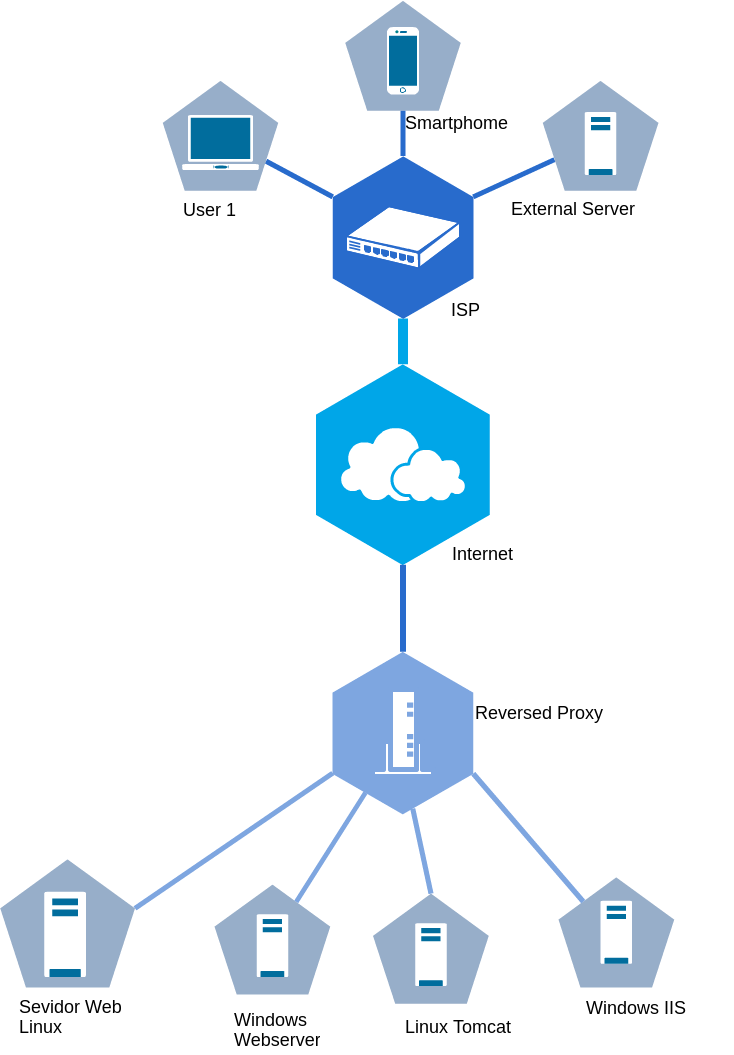
For the Web management system of Cloud-Bricks, an HTTP server is an element(s) where the IP address(es) and port(s) where running a Web service will be configured.
Create HTTP server from a virtual machine
For there to be an HTTP server must create a virtual machine and install a Web server on it.To publish the web site, enter the virtual machine and take note
of the address of the HTTP protocol.
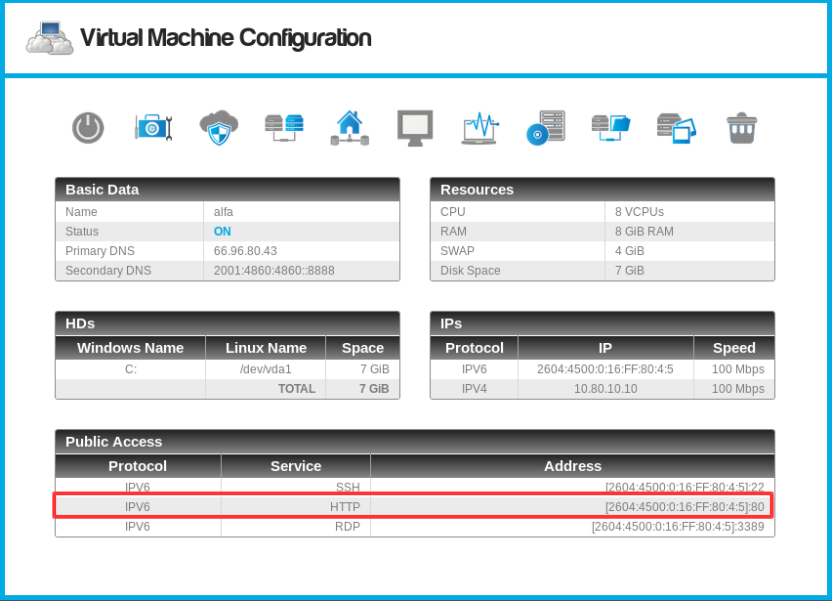
The "HTTP Server" element operation is based on the virtual server'S Ip. Public, private, IPv4 or IPv6 are accepted (Do not use the NAT IPs network for this purpose).
To create a Web server copy IP: HTTP service port and go to left menu Web System> HTTP Servers.
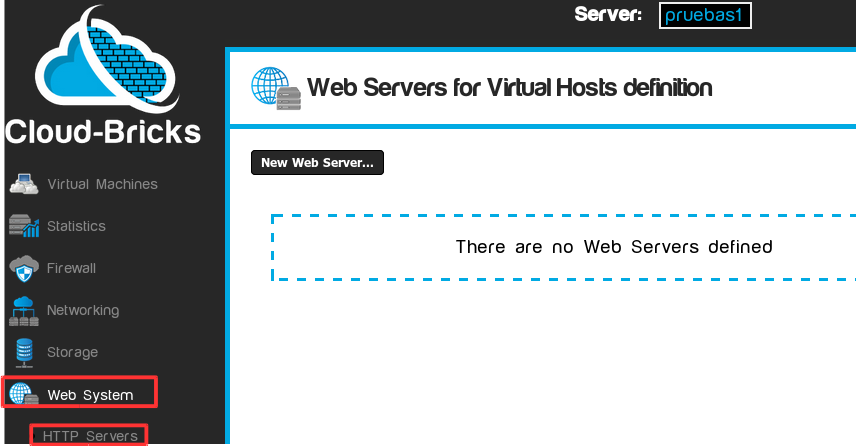
Click the New Web Server... button. Put the HTTP server data here.
The following example will create a HTTP server called WordPress:
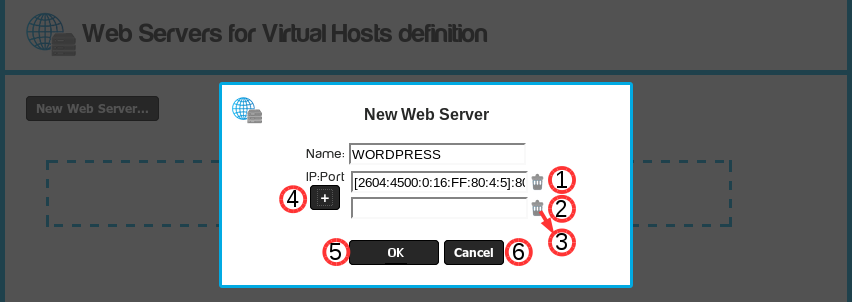
- Web server name
- IP: Port of the virtual machine that is running the Web Server
(paste the copied data in the first step).
- Delete button IP:Port.
- + button IP:Port:
- You can add multiple IPs and ports.
- If set more than one IP:port object, the HTTP server will
works as a load balancer distributing requests evenly between
different IPs configured.
- This mechanism is known as load balancing Round-Robin.
- OK button, allows you to update the list of Web servers the previous screen.
- Cancel button, cancels the operation.
Click on the OK button.
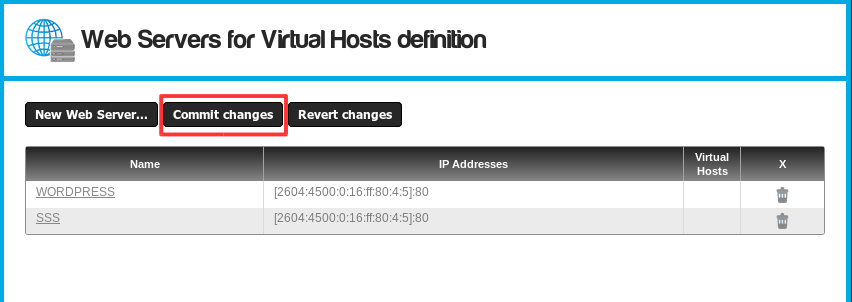
Click on the Commit Changes button to save the HTTP servers. The new HTTP server is now available and can be used to configure a Virtual Host.
Load balancing with Web Servers
The web system Cloud-Bricks lets you configure load balancing
between multiple virtual servers, using a list of IPs and ports
among which must be distributed HTTP requests.
This feature helps to load balance Web queries across multiple
servers. Improving performance and fault tolerance of the portal.
Load balancing example
In the following example, you will configure a system load
balancing between two servers, one Linux and another Windows.
Requirements for load balancing:
- Linux virtual machine with apache on port 80 and a network card.
- Windows virtual machine with IIS on port 80 and a network card.
Create HTTP server for load balancing
Create the Web server as in the previous procedure.

- Web server name
- IP: Port of the virtual machine that is running the Web
Server.
- Delete button IP:Port.
- Add button IP:Port.
- OK button, allows you to update the list of Web servers the previous screen.
- Cancel button, cancels the operation.
Click on the + button, and add the IP:port of the second
virtual server, now we will use an IPv4 address

- Click OK.
- Now let's create a Virtual
Host that uses the HTTP server you just created
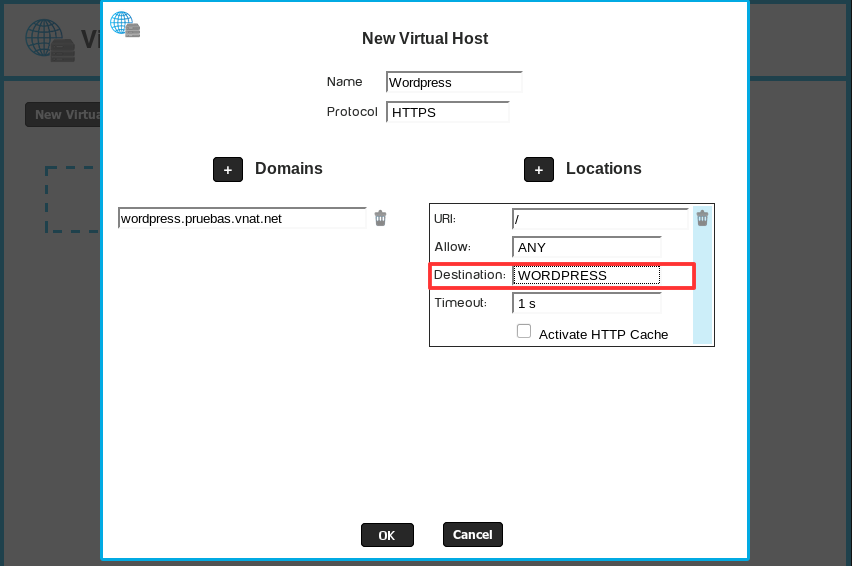
The method used Round-robin balancing is known and is to send an HTTP request to each of the IPs configured on the "HTTP Server" item.
Now requests will be balanced between the two servers.
In short, to balance performance between servers, you must create an HTTP server with two or more IPs, then create a Virtual Host containing a Location pointing to the HTTP server balanced.